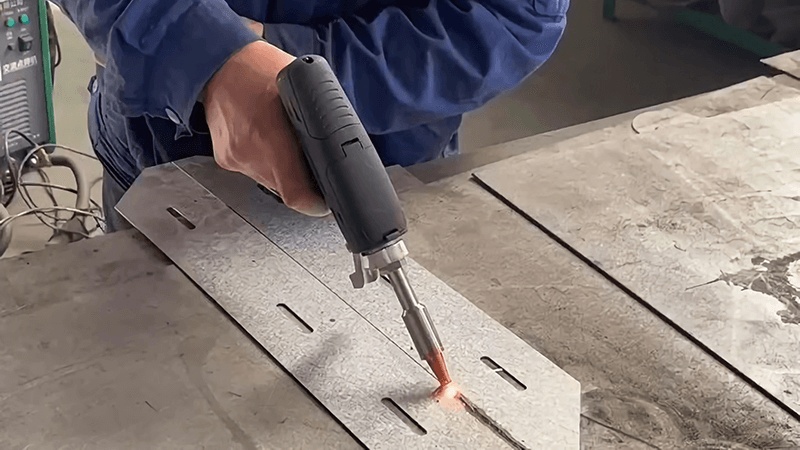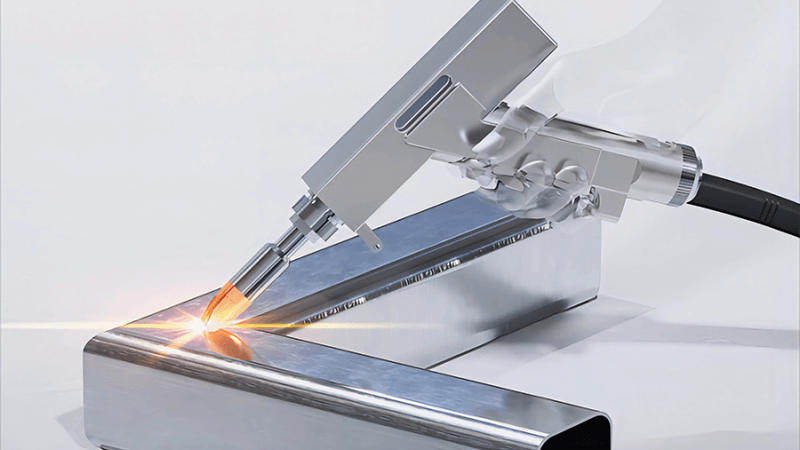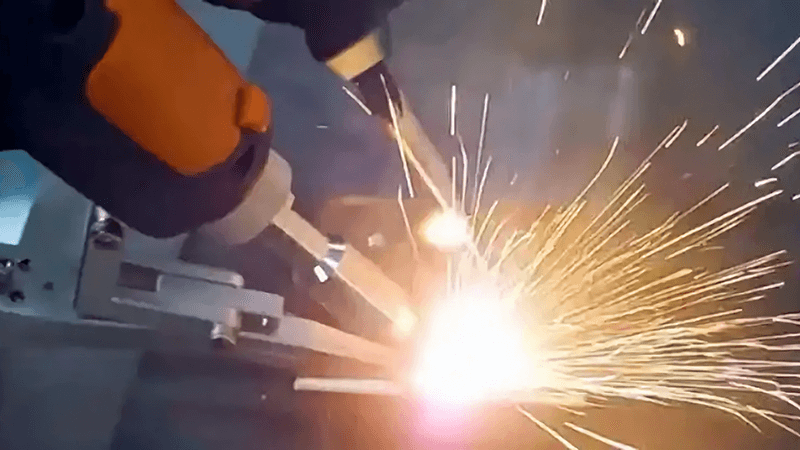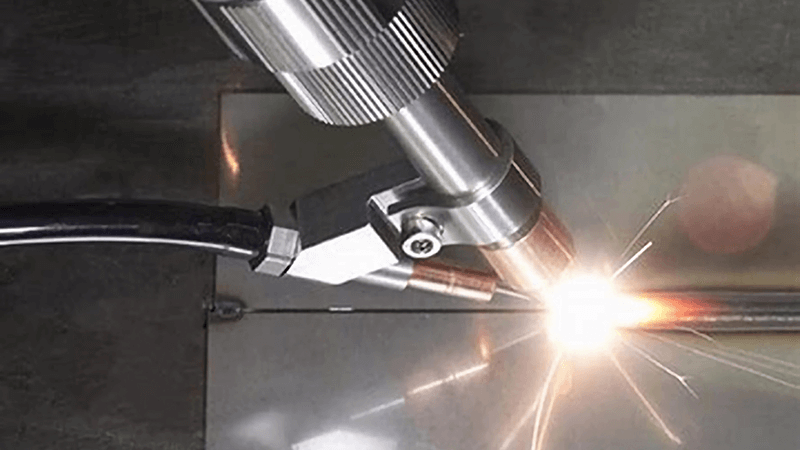When I first entered the laser industry, I often heard the same question: “Where can laser welding actually be applied?” Many buyers worry that it might only suit special cases. The truth is that its use covers a wide range of industries.
Laser welding is usually used in industries such as automotive, aerospace, medical, and electronics, where strong, precise, and clean welds are essential for performance, safety, and efficiency.
I have seen this firsthand. At Kirin Laser, we design machines that adapt to these industries. In this article, I will explain each use case clearly, based on both market demand and my own experience.

What are the applications of laser welding?
Many people think welding is only for large factories, but today even small workshops need high precision. The pain comes when old methods cause warping, cracks, and high rework costs. This makes companies look for modern alternatives.
Laser welding is applied in areas like automotive battery packs, aerospace structures, medical implants, jewelry, and electronics because it offers precise control, low heat input, and strong joints that pass strict quality tests.
Key Application Areas
Laser welding machines from Kirin Laser are built for real production problems. The most common areas include:
1. Automotive
In the automotive field1, especially in battery pack assembly for electric vehicles, laser welding ensures safety and long-term reliability. It creates clean welds that handle vibration and heat cycles.
2. Aerospace
Aircraft parts require lightweight and strong structures. Laser welding makes it possible to join thin materials without adding weight or causing deformation.
3. Medical
Implants and surgical tools need sterile and distortion-free welds. For example, I once helped a client who produced titanium implants. TIG welding warped the parts. After switching to our fiber laser welder, the parts passed inspection on the first try.
4. Electronics
In electronics, connections are often smaller than a millimeter. Laser welding makes it possible to handle these micro joints without damaging sensitive components.
| Industry | Application Example | Benefit of Laser Welding |
|---|---|---|
| Automotive | EV battery packs | Strong, clean joints |
| Aerospace | Structural parts | No distortion, lightweight |
| Medical | Titanium implants | Precision, sterile welds |
| Electronics | Micro connectors, sensors | Low heat, high accuracy |
Each of these applications proves that laser welding2 is not a niche technology. It is a solution across sectors.

What is a laser welder used for?
Many procurement managers ask me this directly. They want a clear answer before investing. The problem is that older welding tools often cannot meet modern standards in accuracy or cleanliness.
A laser welder is used to join metals and alloys with high precision and low heat, making it ideal for thin materials, delicate components, and products that require minimal rework.
Specific Uses
Laser welders are not just “metal joining tools.” They are precise instruments.
Fine Welding
Thin materials like aluminum, stainless steel, and titanium benefit most. Laser welders can deliver controlled heat so edges remain intact.
Seam Welding
Continuous seams in pipes or battery cases need both speed and accuracy. Our machines deliver both.
Spot Welding
Electronics often need micro spot welds. A fiber laser3 makes these possible with repeatable accuracy.
Repair Welding
High-value molds or turbine blades can be repaired with laser welding. This saves replacement costs.
| Type of Use | Typical Industry | Why Laser Welding Works |
|---|---|---|
| Fine Welding4 | Medical, aerospace | Low heat, no distortion |
| Seam Welding | Automotive | Speed and durability |
| Spot Welding | Electronics | Accuracy at micro scale |
| Repair Welding | Tooling, energy | Extends part lifespan |
In my own projects, I saw one medical client benefit from fine welding. With TIG, they failed quality control. With our laser, they achieved consistent results.

Which industry commonly uses lasers for cutting and welding?
Sometimes people confuse cutting and welding. Both rely on lasers but serve different needs. The challenge is finding one machine supplier who understands both.
Industries such as automotive, aerospace, and electronics commonly use lasers for both cutting and welding because lasers provide high precision, speed, and adaptability across complex parts and materials.
Industries Leading the Way
From my experience, three sectors lead in adopting both cutting and welding5:
Automotive
Car frames, exhaust systems, and EV batteries all rely on lasers. Cutting gives shape, welding provides strength.
Aerospace
Planes and rockets need lightweight alloys shaped and joined without compromise. Laser technology achieves both.
Electronics
Smartphones, computers, and sensors use laser cutting6 for micro-shapes and welding for micro-assembly.
| Industry | Cutting Application | Welding Application |
|---|---|---|
| Automotive | Body panels, gears | EV batteries, exhaust systems |
| Aerospace | Thin aluminum sheets | Structural assemblies |
| Electronics | PCB outlines | Micro-solder-free connections |
At Kirin Laser, we design machines that handle both. A distributor I worked with needed dual solutions for auto parts. By offering both cutting and welding in one package, they reduced supplier complexity.

Which of the following materials is most suitable for laser welding?
The final question always comes down to materials. Buyers want to know if their metal can be welded. The issue is that not all materials respond equally well to laser energy.
Materials most suitable for laser welding include stainless steel, titanium, aluminum, and nickel alloys because they absorb laser energy efficiently and produce strong, stable welds.
Material Suitability
At Kirin Laser, we often guide clients through this. Some metals are perfect, others are more challenging.
Stainless Steel
Most common and easiest. It delivers smooth welds with great strength.
Titanium
Excellent for aerospace and medical. Needs precision control to avoid oxidation.
Aluminum
Tricky but possible with fiber lasers. Works well in automotive for lightweight needs.
Nickel Alloys
Good for high-temperature environments. Used in energy and aerospace.
| Material | Suitability | Notes on Welding |
|---|---|---|
| Stainless Steel | High | Smooth, strong welds |
| Titanium7 | High | Needs shielding gas |
| Aluminum8 | Medium-High | Fiber lasers give good results |
| Nickel Alloys | High | Ideal for heat resistance |
One of my favorite cases was with titanium. A client struggled with ultra-thin implants. TIG welding failed, but with our fiber laser, the implants passed inspection on the first attempt. That proved the material’s suitability.

Conclusion
Laser welding9 is not a single-purpose technology. It serves automotive, aerospace, medical, and electronics with equal impact. The machines are used for fine, seam, spot, and repair welding. Industries also combine cutting and welding for complex workflows. Stainless steel, titanium, aluminum, and nickel alloys stand out as the best materials. From my own projects with Kirin Laser, I have seen how the right machine transforms production, saves costs, and builds long-term confidence in manufacturing.
-
Discover how laser welding improves safety and reliability in electric vehicle battery pack assembly. ↩
-
Explore the advantages of laser welding across different sectors, enhancing production efficiency and product quality. ↩
-
Discover how fiber lasers enhance precision and repeatability in micro spot welding, crucial for high-quality electronic manufacturing. ↩
-
Discover how fine welding enhances quality control in medical applications, ensuring better outcomes. ↩
-
Discover how laser technology enhances efficiency and precision in cutting and welding across automotive, aerospace, and electronics sectors. ↩
-
Explore this link to understand how laser cutting enhances precision and efficiency in various manufacturing processes. ↩
-
Explore the advantages of titanium in welding, especially in aerospace and medical fields, to understand its unique properties. ↩
-
Discover how fiber laser technology enhances aluminum welding, making it more efficient for automotive applications. ↩
-
Find the best laser welding machine and laser welding solutions from Kirin Laser. clicking this link to get all your needs for your business. ↩





